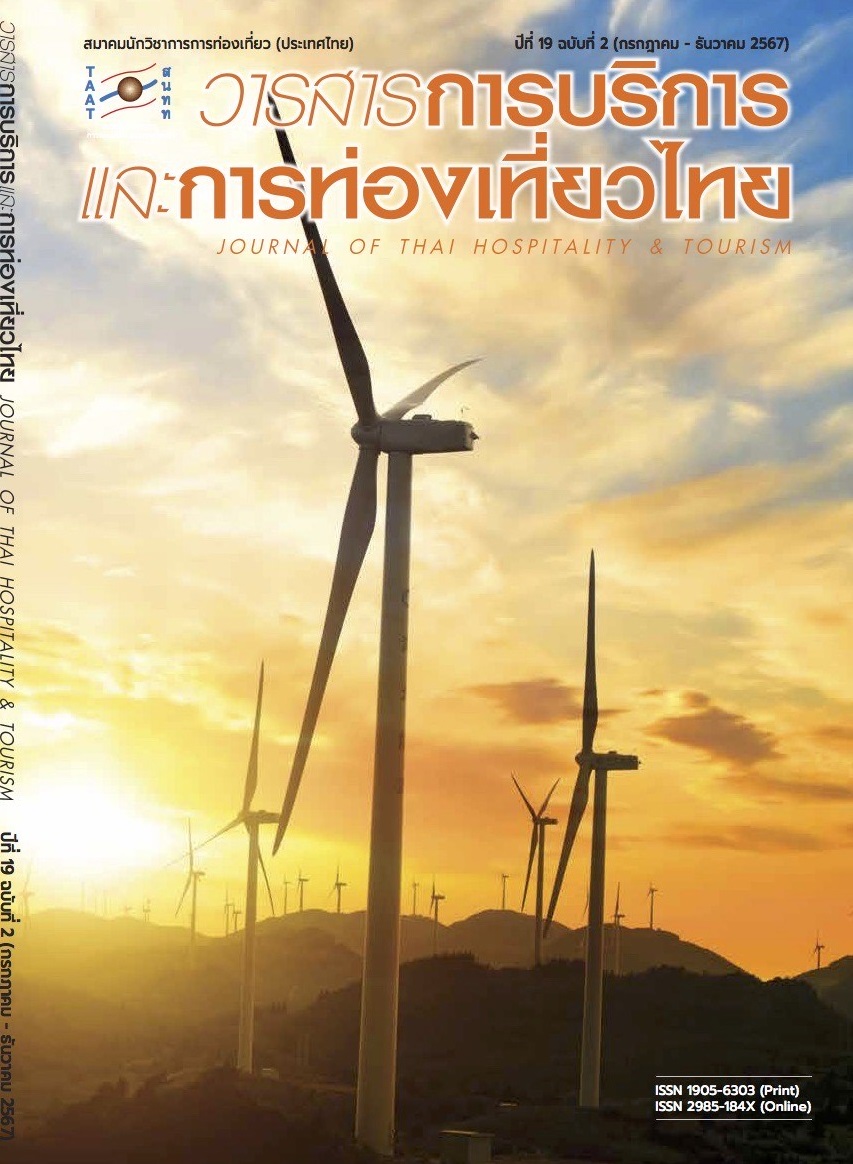Strategies for the Development of Routes and Resource-Based Innovative Tourist Attractions Existing in the Lower Northern Region 2 after the COVID–19 Situation
Main Article Content
Abstract
The purpose of this research is to study and create strategies and present route development strategies and an innovative tourist attraction based on existing resource bases in the lower northern region 2 after the situation of COVID–19, using mixed-method research, including quantitative research that collects data from entrepreneurs and government officials, 400 academics, and civil society, and qualitative research using in-depth interviews with entrepreneurs and government officials, totaling 15 people.
The research results in responding to the objectives were found that:
Objective 1: To study strategies for developing routes and innovative tourist attractions based on existing resources in the lower northern region of Thailand 2 after the COVID–19 situation. It was found that all aspects were high.
Objective 2: Strategies for the development of routes and innovative tourist attractions based on existing resources in the lower northern region 2 after the COVID–19 situation. The operation is heading in the direction of achievement. It is effective in developing communities and raising their outstanding potential. It has a real identity
Objective 3: To present strategies for developing routes and innovative tourist attractions based on existing resource bases in the lower northern region 2 after the COVID–19 situation. To achieve sustainable goals according to the needs of all stakeholders.
Article Details

This work is licensed under a Creative Commons Attribution-NonCommercial-NoDerivatives 4.0 International License.
References
Chalermdan, N. (2020). Consumers’ Behavior on Buying Delivery Food via Mobile Application during New Species of Corona Virus 2019 (COVID–19) in Bangkok. Journal of Industrial Business Administration, 2(1), 92–106.
Community Development Department (CDD). (2018). Manual for Driving the Operation of OTOP Nawatwithi Tourism Community Project. CDD.
Decyk, K. (2019). Competitiveness Factors in the Innovative Enterprises. Proceedings of 6th International Scientific Conference on Contemporary Issues in Business, Management and Economics Engineering 2019.
Dokboonnak, N. & Thongkamnuch, T. (2013). Community Participation in Tourism Management: A Case Study of 100-Years-Old Samchuk Market Community, Suphanburi Province. Thailand Research Fund.
Gerdruang, A. (2018). Principle of Public Policy Evaluation. Chulalongkorn University Press.
Krejcie, R. V. & Morgan, D. W. (1970). Determining Sample Size for Research Activities. Educational and Psychological Measurement, 30(3), 607–610.
Kunpluem, P. (2021). Business Adaptation after the COVID–19 Era. Journal of Politics, Administration and Law, 12(2), 99–110.
Ministry of Industry (MIND). (2020). Local Product Technology Master Plan. Rung Ruang Sarn Press.
Office of the National Economic and Social Development Council (NESDC). (2020). The Concept of Sustainable Development. NESDC.
One Tambon One Product (OTOP). (2020). Guidelines for Product Development One Tambon One Product. Saeng Rung Printing.
Polsombun, P. (2016). Development of OTOP Industrial Business Management Model to Enhance Efficiency of Sustainable Competitiveness. King Mongkut’s University of Technology North Bangkok.
Photisoda, A. (2020). Development Guidelines for Logistics Management for OTOP Nawatwithi Tourism Community, Ban Khuan Kee Rad-Thung Chang, Hat Yai District, Songkhla Province. Yala Rajabhat University
Siriboriruk, J. (2020). COVID–19. Burapha Journal of Medicine, 7(1), 89–95.
Saebi, T., Lien, L., & Foss, N. J. (2016). What Drives Business Model Adaptation? The Impact of Opportunities, Threats and Strategic Orientation. Long Range Planning, 50, 567–581.
The Office of SMEs Promotion (OSMEP). (2020). Problems and the Adaptation of OTOP to AEC. OSMEP.
Warasiri, K. & Sawagvudcharee, O. (2020). Historical Innovative Ayutthaya Model. EAU Heritage Journal Social Sciences and Humanities, 9(3), 245–258.


